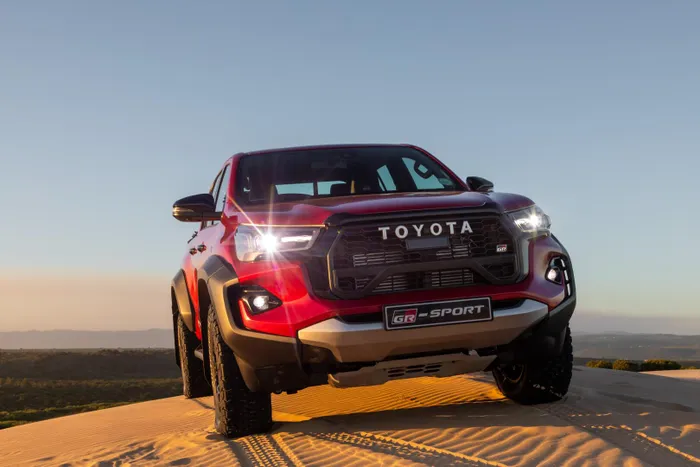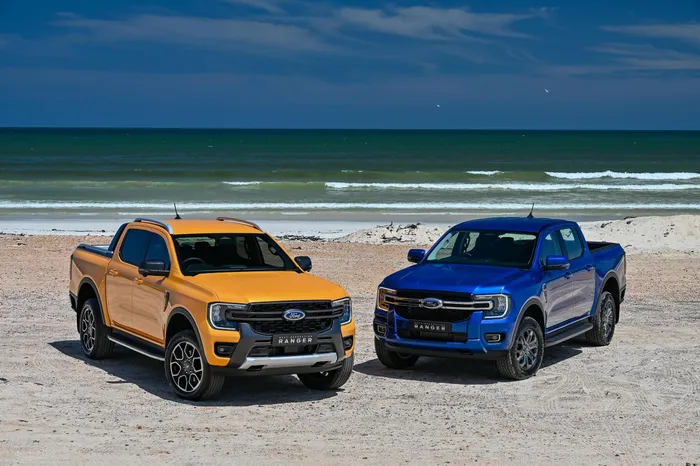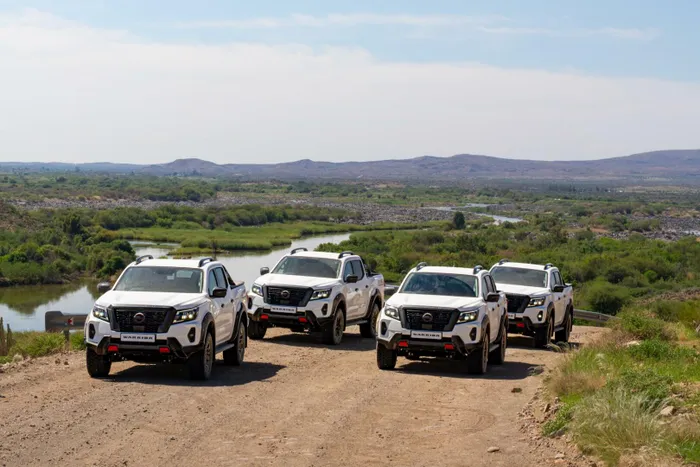Bakkie fever: why South Africans can't get enough of Hilux, Ranger, D-MAX and more
SA'S BAKKIE OBSESSION

The locally made Toyota Hilux is South Africa's best selling bakkie.
Image: Supplied
Sho’t left, tjom, chakalaka, boerewors, braai, chesanyama, vuvuzela, braai broodjie, brandewyn, bra, boet, broer, bakkie.
You don’t get more South African than that, and when you are standing around a braai fire, the discussion inevitably turns to South Africa’s favourite vehicle - the bakkie - because they’re embedded in our cultural heritage.
Test of time
And while the death march slowly plays for saloon cars as everyone clamours to get behind the wheel of an SUV or Crossover, the bakkie continues to stand the test of time.
In a country like South Africa with its vast distances, rural areas with gravel roads and the need to transport goods and people, bakkies will always be the first choice.
If you’ve travelled to isolated rural areas with their limited infrastructure, bakkies play a vital role in serving the community in a number of ways.
When you think about emergency services cars, many of them use a bakkie modified in a variety of ways to serve their particular need.
Bakkies showcase our sense of adventure - whether travelling to far-flung places kitted as an overlander, towing caravans, boats, trailers, off-road caravans and trailers or motorcycles - we’re always on a mission to satisfy our leisure activities.

The locally made Ford Ranger leads double cab sales in South Africa.
Image: Supplied
Workhorse to luxury
Originally used as workhorses in the agricultural and mining industry, we've come a long way since single cabs with bench seats, column shifts, hard leaf suspension and no seat belts.
Modern bakkies have become comfortable transport with fantastic suspension, good looks, dynamic handling and are loaded with the most modern technology.
Fundamentally, the brief hasn’t changed, though, with the load bay still an integral part of its DNA.
Back in the day, the Ford Cortina Big Six bakkie was all the rage, bringing relative sedan comfort to the interior and handling with some decent performance.
My grandfather was in the construction industry, and apart from the Toyota Dyna commercial truck, his daily drive between sites was a Toyota Stout.
As the eldest grandson, I remember sitting next to him during school holidays, sharing a flask of coffee that would spill onto you as a result of the awful suspension and gravel roads on the outskirts of Pretoria.
The smell of a vinyl seat and hard plastic permeated the air, but it mattered little because we were in a bakkie and I was with oupa (grandfather).
Later, when my uncle joined him in the business, a cool twentysomething wasn’t going to lumber around in a Stout after his studies, so a 3.0-litre four-speed yellow V6 Cortina was his go-to.
It had the same carrying capacity but was vastly superior in comfort and would smoke the tyres when you dropped the clutch.
Local
There’s some debate as to the origins of the double cab, but it’s generally accepted that they first saw the light in the 50s and 60s in the United States.
In South Africa, the Daihatsu Hi-Line, badged as the Leyland 1900 pick-up, is considered to be the first double-cab bakkie to be sold and assembled in South Africa in 1974.
However, it found little traction, and it took the Isuzu KB Series for people to first sit up and take notice.
Since then, the market has rapidly matured, and today the Toyota Hilux, Ford Ranger and Isuzu D-Max dominate the sales charts.
Proudly built in South Africa are the Toyota Hilux (Durban), Ford Ranger (Pretoria), Isuzu D-MAX (Gqeberha) and Nissan Navara (Pretoria). No DNA, just RSA.

The Isuzu D-MAX is locally built and a popular choice among South Africans.
Image: Supplied
Toyota and Ford
We reached out to Ford And Toyota to get their take on the bakkie trend that never seems to reach saturation point.
“South Africa’s love affair for bakkies is legendary.
“Toyota very quickly established a reputation for quality, durability, and reliability with the introduction of its humble Toyota Stout in South Africa,” said Riaan Esterhuysen, Senior Manager: PR & Corporate Communications for Toyota South Africa.
“The Stout in turn made way for the Hilux, which was introduced globally in 1968 and made its local debut in 1969. The Hilux quickly cemented itself as not only a mode of transportation, but a business partner, a farming tool, a friend, and a member of the family.
“The introduction of the first 4x4 derivative in 1979, moved Hilux and the bakkie into a new lifestyle space – where South Africans could now explore our beautiful country and outdoor scenery by taking their vehicle off the beaten track.
"This go-anywhere capability coupled with the double-cab’s five-seater configuration (which Hilux also pioneered in 1984 with the introduction of the fourth generation model) and more car-like specification and comfort, transported the bakkie from a work vehicle to family car and lifestyle companion.
“It could carry a load of bricks during the week while going camping over weekends. The Raider grade, introduced with the fifth generation model in 1998, became the benchmark lifestyle bakkie offering car-like specification and features in one complete package,” he continued.
“With each successive generation of the Hilux, the focus has been on making it even better without compromising the ‘Legendary Toughness’ that its predecessors have undoubtedly proven.
We believe this is the key to its success of being the market leader for over 50 years, and as we like to say; ‘it’s not a Bakkie, it’s a Hilux’.”
According to Ford, part of the locally built Ranger’s popularity is the ownership experience.
“The Ford Ranger is considered by many South Africans to be the best looking bakkie on sale, combining modern styling with rugged ability,” said Maja Smith General Manager – Dealer Sales.
“Beyond aesthetics, factors such as the Ranger’s on-road refinement and competitive price also hold appeal for buyers seeking a reliable vehicle that can fulfil numerous roles in all conditions, and has strong resale value.
“Furthermore, the strength and reach of the Ford Dealer Network coupled with local manufacturing, means that customers can have their vehicles serviced with genuine Ford parts wherever they are in South Africa.
“Enhancing the ownership experience and potentially influencing purchasing decisions is the expanded Ford Family Promise, which offers a comprehensive set of services and benefits designed to simplify ownership and provide peace of mind,” she concluded.
Interestingly, Ford leads the double cab sales charts in South Africa.

The Nissan Navara is another locally built bakkie.
Image: Supplied
Pricing for double cabs ranges from R399 900 to R1 862 100 with a choice of petrol or diesel engines, manual or automatic transmissions and 4x2 or 4x4 options.
Last month. 8 256 new bakkies were sold in South Africa - underscoring their popularity in the local market.
It doesn’t mean, though, that bringing a one-ton bakkie to South Africa guarantees success.
Mercedes tried to get in on the act with the X-Class, a joint venture with Nissan, using the Navara as the donor vehicle.
After a few years and less than decent sales, it was discontinued.
Last year, the Mazda BT 50 was stopped locally after 18 years following stalled sales.
Still, with the Chinese onslaught, they continue to see the bakkie as a South African magic bullet, and the market has been inundated with Far East alternatives, with the jury still out on their longevity and long-term commitment.
More to come
No doubt we’ll see more double cabs testing the waters in the next few years, including the likes of Kia with their Tasman.
Fashion and automotive trends may come and go, but in South Africa, the bakkie will remain the go-to for many years to come.
April reported bakkie sales in alphabetical order
Ford Ranger: 1,728
Foton Tunland G7: 212
GWM P-Series: 497
GWM Steed: 71
Isuzu D-Max: 1,108
Mahindra Bolero: 40
Mahindra Pik-Up 654
JAC T-Series: 161
Mitsubishi Triton: 16
Nissan Navara: 293
Jeep Gladiator: 5
Peugeot Landtrek: 100
Toyota Hilux: 2,923
Toyota Land Cruiser PU: 417
Volkswagen Amarok: 254
Total: 8 256 bakkies
These numbers exclude Light Commercial Vehicles like the Hyundai H100 bakkie, JAC X-Series, Kia K2500 and K2700, which add an additional 287 units to the mix.
Related Topics: